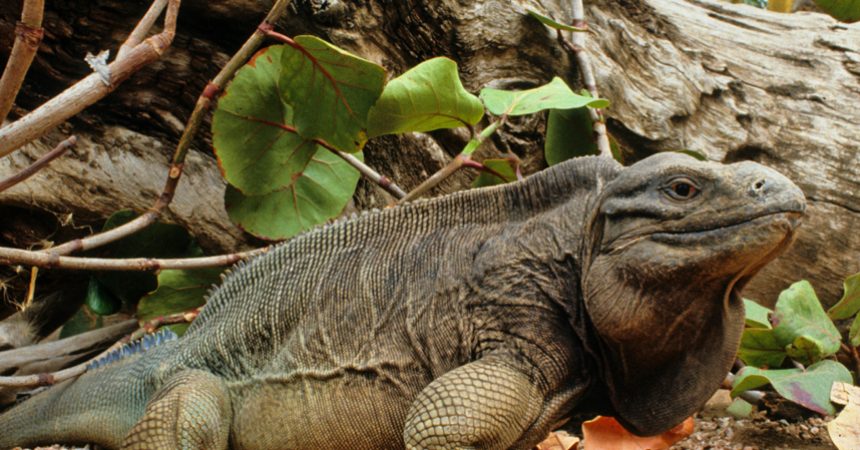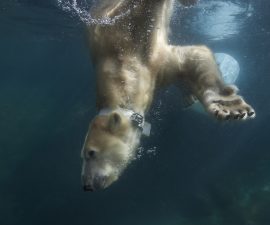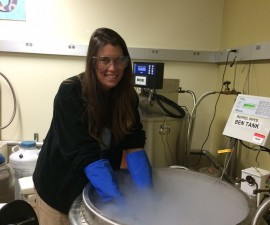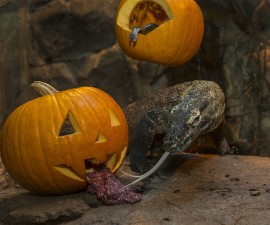The West Indian rock iguanas of the genus Cyclura are a unique group of large lizards that inhabit many of the islands of the Bahamas, Greater Antilles, and Lesser Antilles. Until recent times, these iguanas were the largest of the native land animals on these islands. Because they are important seed dispersers, they help keep tropical dry forests and other biomes in the region healthy. As a group, rock iguanas are considered to be the most endangered lizards in the world, primarily because much of their fragile island habitat has been destroyed by human encroachment. In addition, non-native livestock have severely degraded the land and food plants on which the iguanas rely for survival. Feral predators such as cats, mongooses, and dogs prey on rock iguanas, especially juveniles, and many taxa of rock iguanas are in danger of becoming extinct. The loss of rock iguanas has serious consequences for the ecosystems in which they live.
For over 20 years, researchers from the San Diego Zoo Institute for Conservation Research (ICR) have been studying rock iguanas in their native habitats in order to help conserve these giant lizards. Our work with wild iguanas and the information we have gained from our wild studies is also being used to achieve results with our captive breeding programs. Zoos and conservation organizations have strict breeding protocols for rock iguanas. Genetic data are closely tracked and pairings are made to keep bloodlines as pure and unrelated as possible. Later, these captive-bred animals can be used to repopulate or augment populations in the wild that may need assistance.
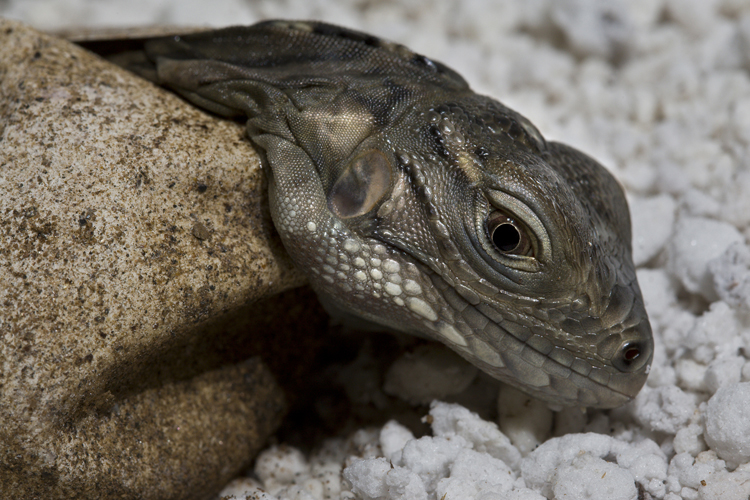
A Grand Cayman blue iguana hatching at the Griffin Reptile Conservation Center at the Safari Park.
In 2008, our iguanas made the move from the San Diego Zoo to the newly constructed Kenneth and Anne Griffin Reptile Conservation Center, an off-display breeding facility at the San Diego Zoo Safari Park. This building is managed and operated by the Behavioral Ecology Division of the San Diego Zoo Institute for Conservation Research. The 2,500-square-foot facility was built specifically for the husbandry and breeding of Cyclura. It consists of 20 indoor/outdoor enclosures, a kitchen, and a nursery. The building features thermostatically controlled units that are used to mimic the temperatures and humidity of the Caribbean. Each enclosure has a soil depth of three feet in both the indoor and outdoor areas to facilitate burrowing and nesting and enclosures are planted with native Caribbean plants. Animals receive natural sun in the outdoor pens or through special windows that transmit ultraviolet light.
We currently keep four species of rock iguanas at the Griffin Center. We have a single male Cuban iguana Cyclura nubila nubila named “Gitmo”; our ambassador of iguana programs who is used for public outreach. Gitmo came to us from Guantanamo Bay, Cuba, in 1992. We were studying iguanas on the base and Gitmo was one of the dominant males on a beach where military personnel liked to feed iguanas. After Gitmo chased a child and took a hotdog from him, the military wanted Gitmo gone. The only safe option for the massive iguana was in our care.
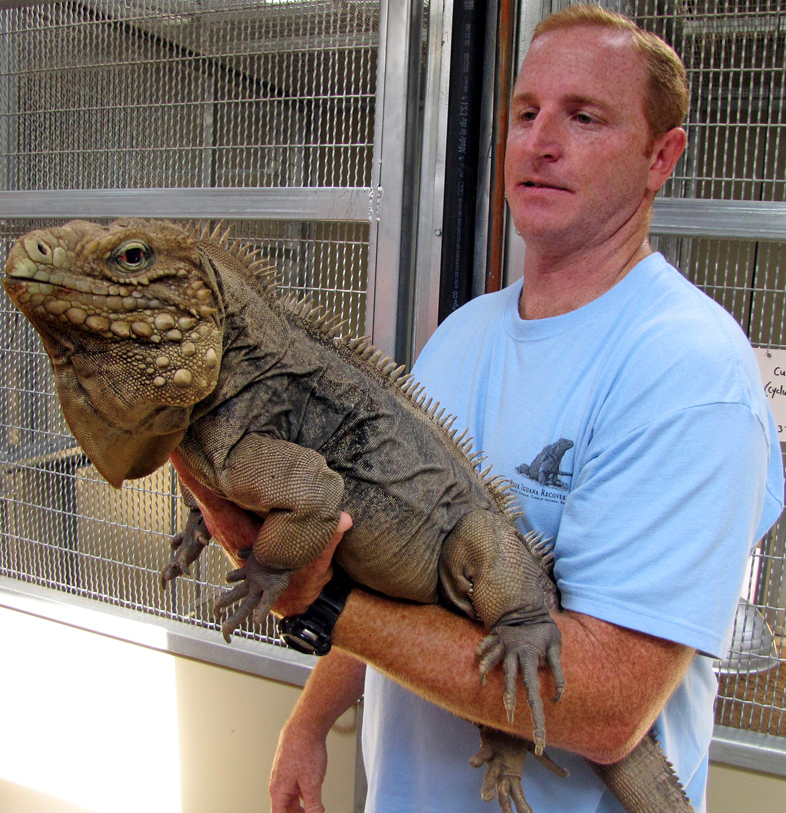
“Gitmo” with the author.
Jamaican iguanas Cyclura collei were brought directly to our facility from the headstart facility in Jamaica in 2006. This species is one of the most endangered lizards in the world and was rediscovered in 1991 after it was thought to be extinct for 45 years. In 2013, we became the third facility in the world to reproduce the Jamaican iguana in captivity.
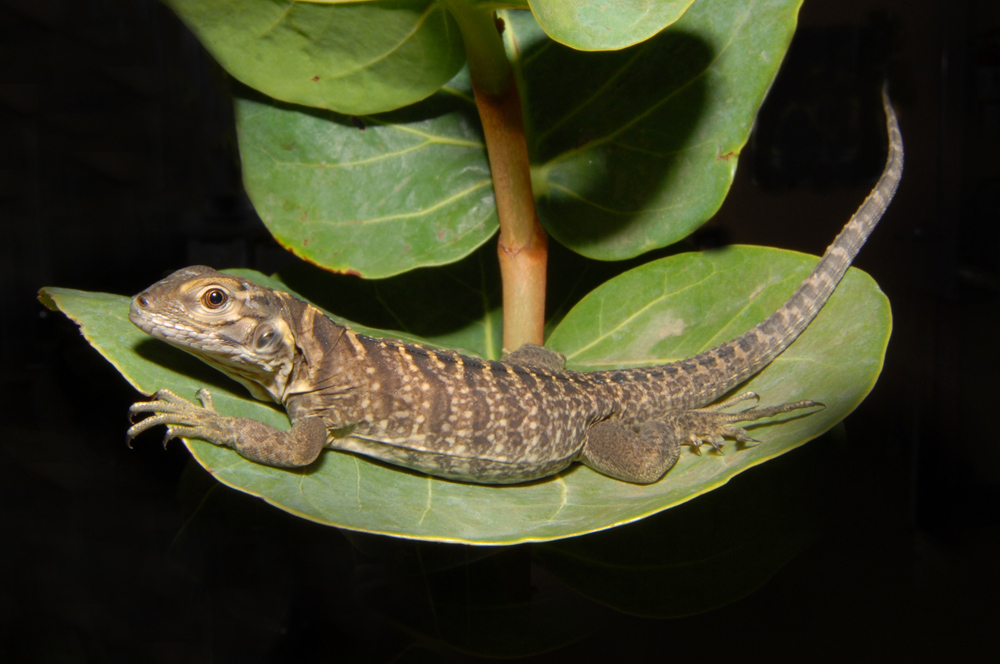
Our first Jamaican iguana hatchling.
We also house a group of Anegada Island iguanas Cyclura pinguis (pictured at the top of this article) that hail from the British Virgin Islands. Aside from a single animal born at the Fort Worth Zoo, we are the first and only zoological facility to have reproduced them in captivity. Our fourth species represented at the Griffin Center is the Grand Cayman blue iguana Cyclura lewisi. This beautiful iguana species was nearly extinct just 20 years ago but with the help of captive breeding, head-starting and reintroductions, paired with habitat protection, the species has rebounded well enough to be downgraded from “critically endangered” to “endangered”. We received our animals from Grand Cayman in 2005 and since 2007 we have produced numerous offspring.
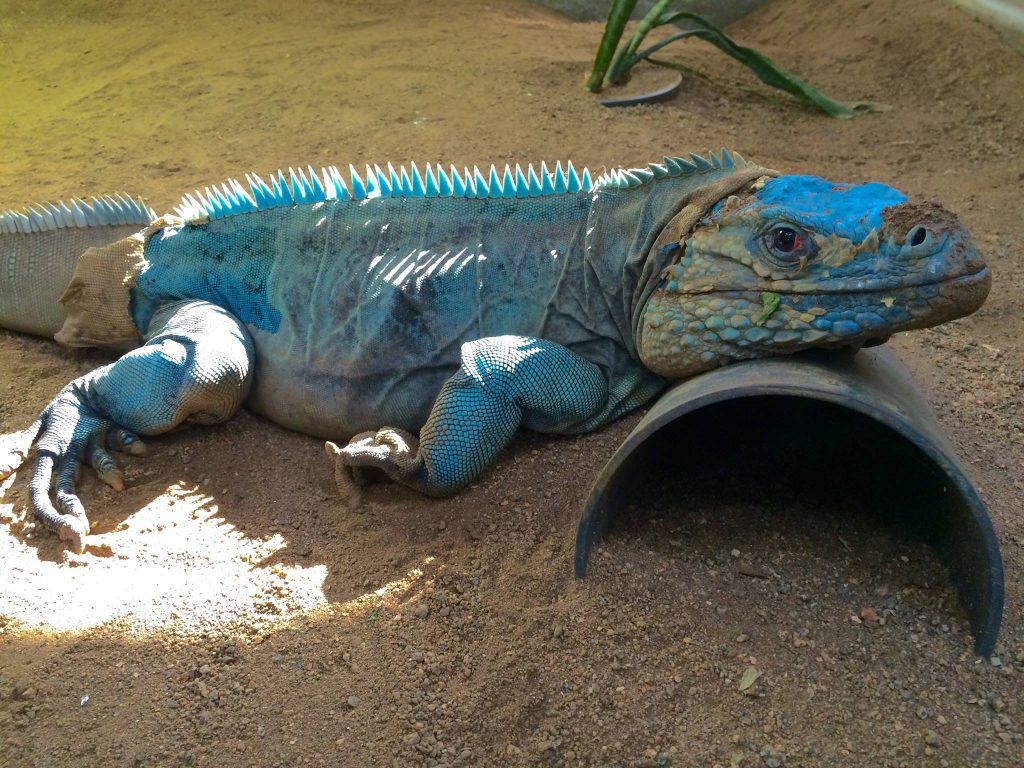
“Marley”, a handsome adult male Grand Cayman blue iguana, reveals his stunning color as he molts.
We are proud to say that in the past 10 years we are the only facility in the world to breed the “Big 3” (the three most endangered lizards in the world) in a captive setting. We will continue to work with and conserve rock iguanas in both captivity and in the wild in the hope that future generations will benefit from our efforts. Although iguanas are not on display at the Safari Park, visitors to the San Diego Zoo can see and appreciate Cuban and Anegada iguanas on Reptile Mesa.

